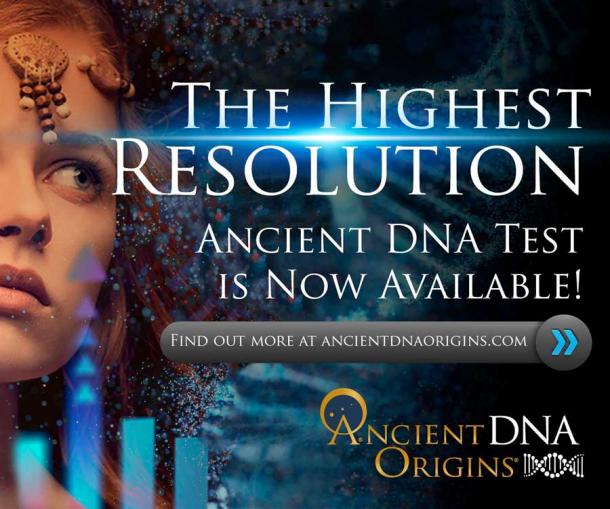
Evidence of Unknown Extinct Human Relative Found in DNA Study of Melanesians
Traces of long-lost human cousins may be hiding in modern people’s DNA, a new computer analysis suggests.
People from Melanesia, a region in the South Pacific encompassing Papua New Guinea and surrounding islands, may carry genetic evidence of a previously unknown extinct hominid species, Ryan Bohlender reported October 20 at the annual meeting of the American Society of Human Genetics. That species is probably not Neanderthal or Denisovan, but a different, related hominid group, said Bohlender, a statistical geneticist at the University of Texas MD Anderson Cancer Center in Houston. “We’re missing a population or we’re misunderstanding something about the relationships,” he said.
This mysterious relative was probably from a third branch of the hominid family tree that produced Neanderthals and Denisovans, an extinct distant cousin of Neanderthals. While many Neanderthal fossils have been found in Europe and Asia, Denisovans are known only from DNA from a finger bone and a couple of teeth found in a Siberian cave (SN: 12/12/15, p. 14).

Denisova cave in Russia, where researchers found teeth and finger bones, which enabled the mapping of the Denisovan genome (public domain)
Bohlender isn’t the first to suggest that remnants of archaic human relatives may have been preserved in human DNA even though no fossil remains have been found. In 2012, another group of researchers suggested that some people in Africa carry DNA heirlooms from an extinct hominid species (SN: 9/8/12, p. 9).
Less than a decade ago, scientists discovered that human ancestors mixed with Neanderthals. People outside of Africa still carry a small amount of Neanderthal DNA, some of which may cause health problems (SN: 3/5/16, p. 18). Bohlender and colleagues calculate that Europeans and Chinese people carry a similar amount of Neanderthal ancestry: about 2.8 percent. Europeans have no hint of Denisovan ancestry, and people in China have a tiny amount — 0.1 percent, according to Bohlender’s calculations. But 2.74 percent of the DNA in people in Papua New Guinea comes from Neanderthals. And Bohlender estimates the amount of Denisovan DNA in Melanesians is about 1.11 percent, not the 3 to 6 percent estimated by other researchers.
While investigating the Denisovan discrepancy, Bohlender and colleagues came to the conclusion that a third group of hominids may have bred with the ancestors of Melanesians. “Human history is a lot more complicated than we thought it was,” Bohlender said.
Another group of researchers, led by Eske Willerslev, an evolutionary geneticist at the Natural History Museum of Denmark in Copenhagen, recently came to a similar conclusion. Willerslev’s group examined DNA from 83 aboriginal Australians and 25 people from native populations in the Papua New Guinea highlands (SN: 10/15/16, p. 6). The researchers found Denisovan-like DNA in the study volunteers, the group reported October 13 in Nature. But the DNA is genetically distinct from Denisovans and may be from another extinct hominid. “Who this group is we don’t know,” Willerslev says. They could be Homo erectus or the extinct hominids found in Indonesia known as Hobbits (SN: 4/30/16, p. 7), he speculates.

Homo erectus tautavelensis skull (public domain)
But researchers don’t know how genetically diverse Denisovans were, says Mattias Jakobsson, an evolutionary geneticist at Uppsala University in Sweden. A different branch of Denisovans could be the group that mated with ancestors of Australians and Papuans.
Researchers know so little about the genetic makeup of extinct groups that it’s hard to say whether the extinct hominid DNA actually came from an undiscovered species, said statistical geneticist Elizabeth Blue of the University of Washington in Seattle. DNA has been examined from few Neanderthal fossils, and Denisovan remains have been found only in that single cave in Siberia. Denisovans may have been widespread and genetically diverse. If that were the case, said Blue, the Papuan’s DNA could have come from a Denisovan population that had been separated from the Siberian Denisovans for long enough that they looked like distinct groups, much as Europeans and Asians today are genetically different from each other. But if Denisovans were not genetically diverse, the mysterious extinct ancestor could well be another species, she said.
Jakobsson says he wouldn’t be surprised if there were other groups of extinct hominids that mingled with humans. “Modern humans and archaic humans have met many times and had many children together,” he said.
Top image: A model of the face of an adult female Homo erectus. Reconstruction by John Gurche, Smithsonian Museum of Natural History (public domain)
This article, originally titled ‘DNA Data Offer Evidence of Unknown Extinct Human Relative’ was originally published on ScienceNews, and has been republished in accordance with their rights and permissions.

















Comments
When I first read of modern man mating with neanderthals I thought, “ew”. Then it dawned on me, I’ve mated with modern women and hey, it wasn’t bad!